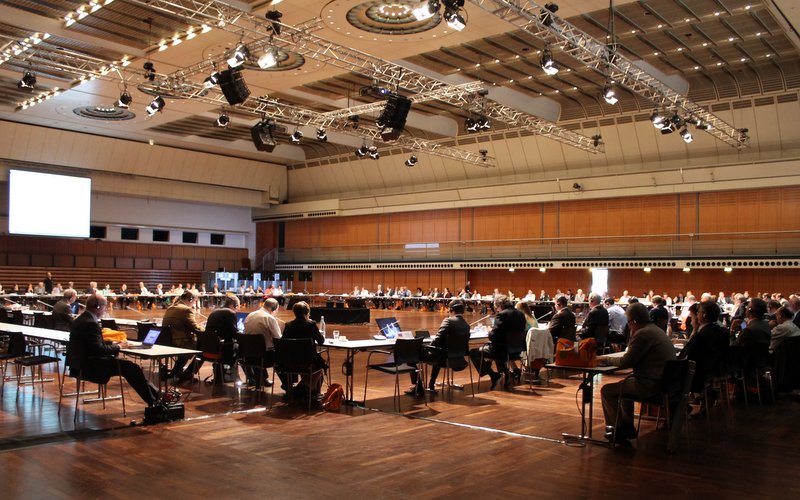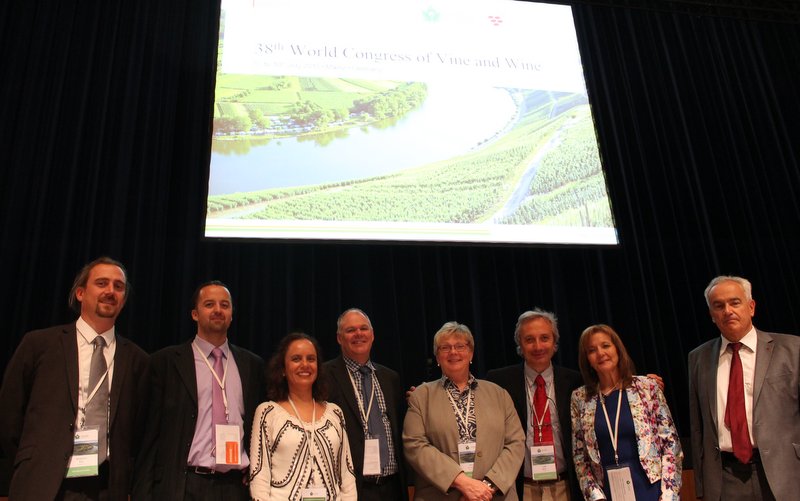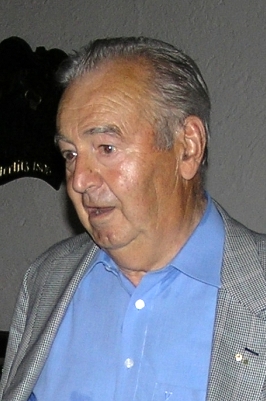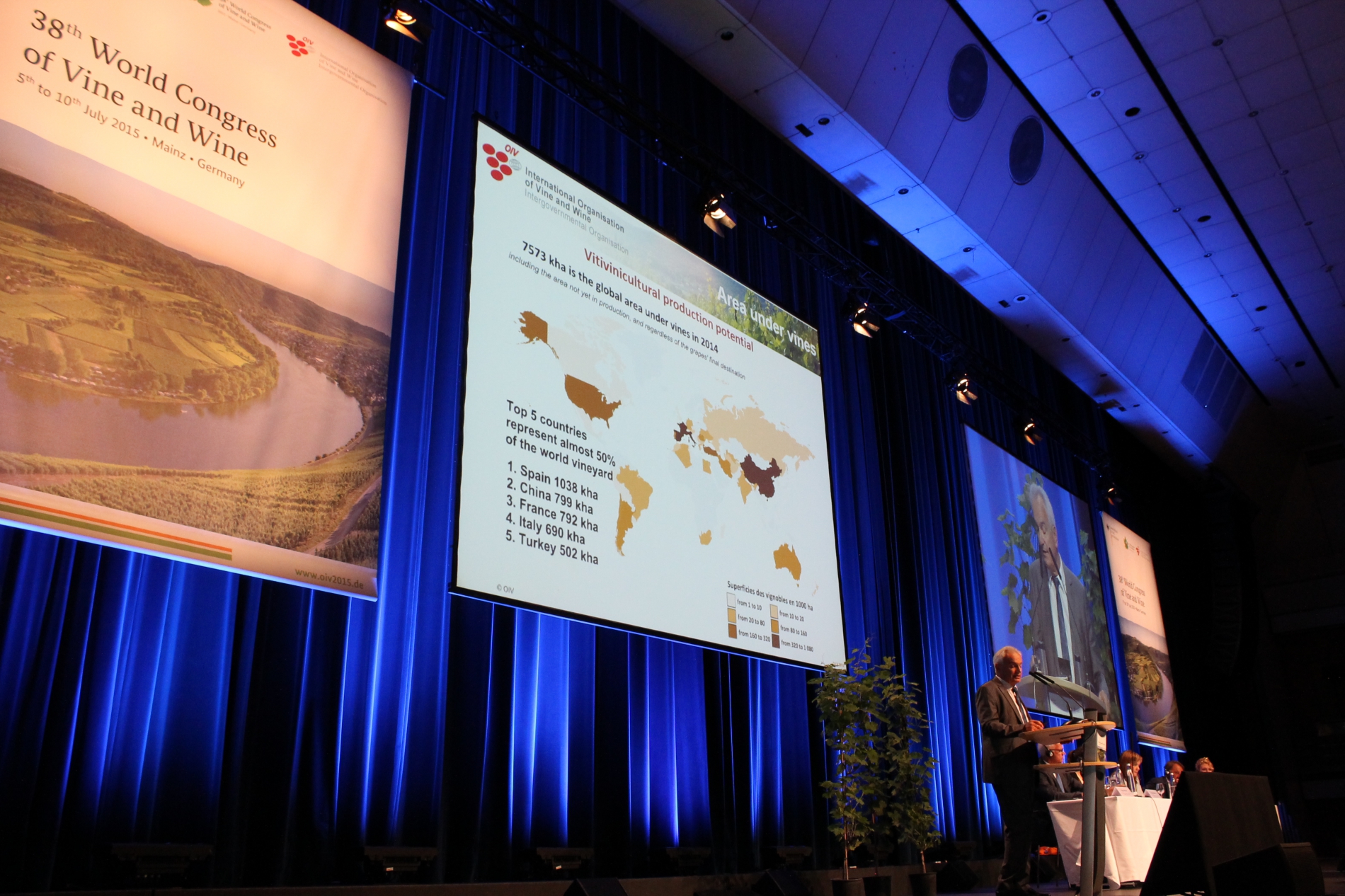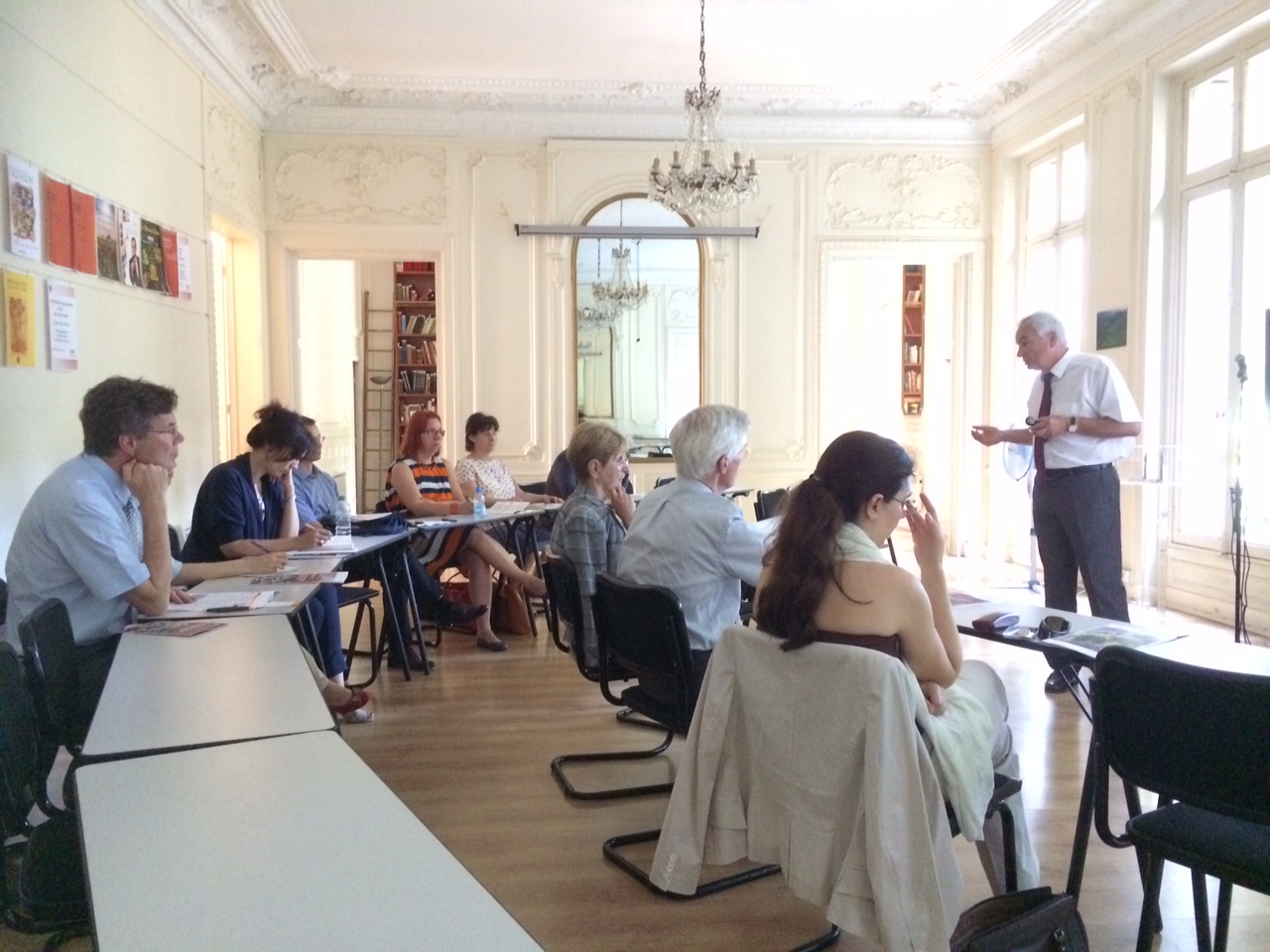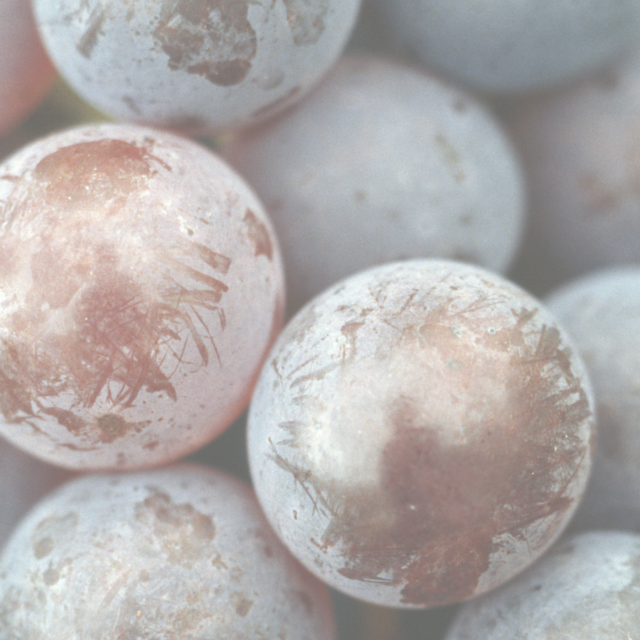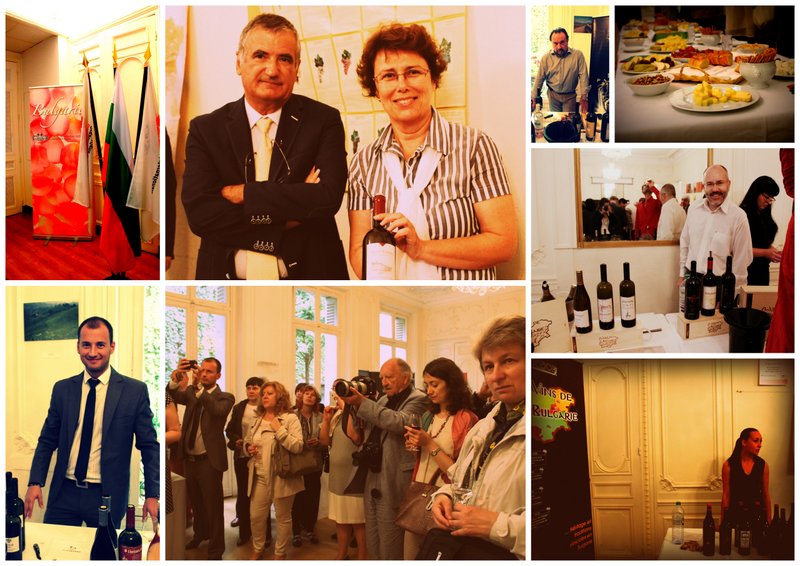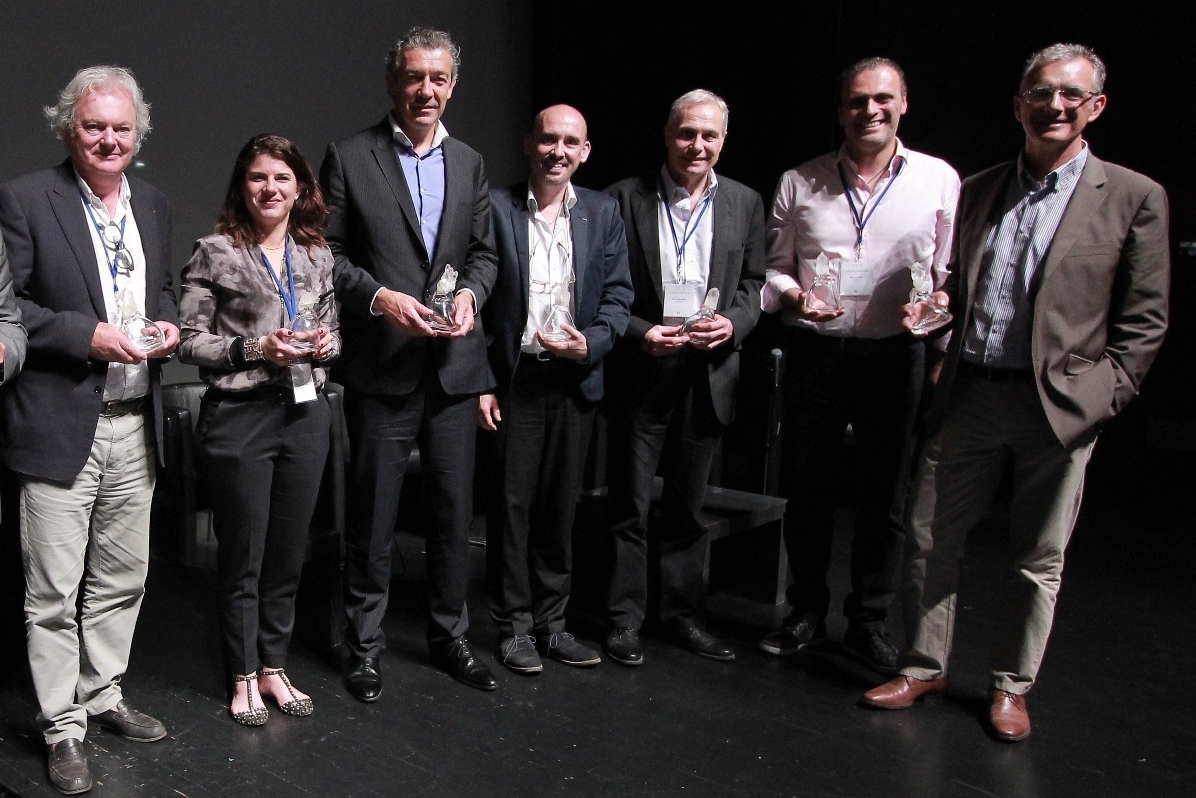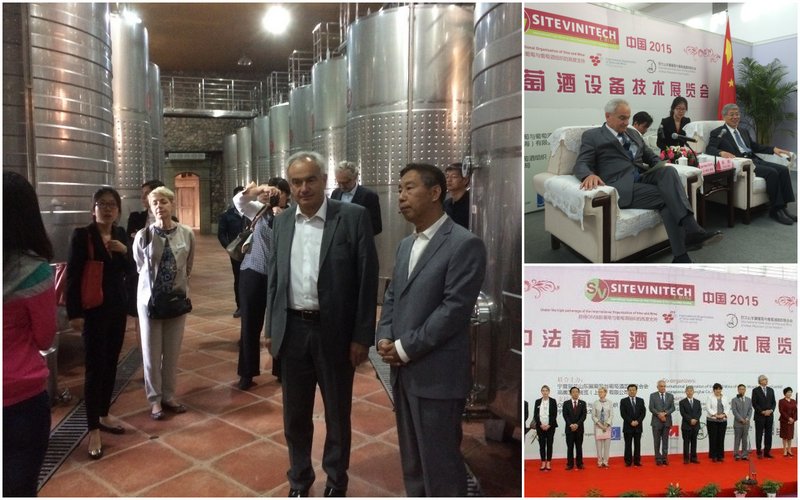20 Jul 2015
Monika Christmann elected as President Having been involved in the activities of the OIV for around 20 years, Prof. Dr. Christmann was unanimously elected by the States present. An oenology teacher and researcher at the Geisenheim Research Institute, she was formerly President of the OIV "Oenology" Commission and OIV Vice-President for 3 years, after being elected by the Scientific and Technical Committee. Monika Christmann will be supported in her new role by a new Steering Committee, since the General Assembly also elected the following as: President of the "Viticulture" Commission: Benjamin Bois (France)President of the "Oenology" Commission: Luigi Moio (Italy)President of the "Economy and Law" Commission: Tony Battaglene (Australia)President of the “Safety and Health” Commission: Nuria García Tejedor (Spain)President of the "Methods of Analysis" Sub-Commission: Ondřej Mikeš (Czech Republic)President of the "Table Grapes, Raisins and Unfermented Vine Products" Sub-Commission: Luis Peres de Sousa (Portugal)
15 Jul 2015
Decisions on viticulture
- As a fundamental component of the vitivinicultural "terroir", climate largely affects the vine physiology, agronomic characteristics and the final quality of its products. In order to be able to assess the scale and significance of the effect of climate change in recent decades in relation to global vitiviniculture, as well as the projections for the future, the OIV adopted a methodology so that these scientific assessments can be adapted to the vitivinicultural sector and be as accurate as possible, before proposing strategies to adapt to these present or future changes (Resolution OIV-VITI 517-2015). This methodology follows four steps: 1/ define the period of the study, 2/ define the spatial scope of the study, 3/ choose the climatic and vitivinicultural variables, and 4/ choose the climatic models and the scenarios of the study.
- Moreover, the OIV adopted recommendations for the inventory of greenhouse gas (GHG) emissions in the vine and wine sector on the subject of the GHGs as well as their global warming potential, activities and impacts to be considered (Resolution OIV-CST-503AB 2015). It also decided to provide more specific information on national and international methodologies for the valuation of GHG emissions in a separate informative report, updated on a regular basis by OIV experts. This document, based on the general principles of the OIV GHG protocol, is intended to provide specific information on the elements to be considered when calculating the GHG emissions of a company or a particular product as well as detailed information on the GHGs to be considered.
- A new oenological practice for the treatment of musts and wines using glutathione (Resolutions OIV-OENO 445-2015 and OIV-OENO 446-2015). The objective of this practice is to limit the intensity of the oxidation phenomena in musts thanks to the ability of glutathione to trap quinones and reduce their oxidasic activity, but also to protect the aromatic substances of the wine from oxidation thanks to the antioxidant properties of glutathione. For wine, it is recommended that glutathione be added during conservation and/or packaging in bottles. The dose used should not exceed 20 mg/L.
- The treatment of wines with malolactic fermentation activators was adopted. This practice is designed to promote the initiation, kinetics or completion of malolactic fermentation either by enriching the environment with nutrients and growth factors of lactic acid bacteria, or by adsorbing some bacteria inhibitors (Resolution OIV-OENO 531-2015).
- a revision of the monograph on proteins of plant origin. A specification is added to the potato proteins by fixing a maximum limit for glycoalkaloids (?-solanine and ?-chaconine) smaller than 300 mg/kg of protein (Resolution OIV-OENO 557-2015);
- a revision of the monograph on tannins (Resolution OIV-OENO 554-2015). This modification concerns iron content which should be less than 50 mg/kg, with the exception of the iron content for tannins from chestnuts which was increased to 200 mg/kg;
- a revision of the monograph on casein (Resolution OIV-OENO 555-2015). This revision concerns the modification of the level of potassium carbonate and/or potassium hydrogen carbonate in the mixture of soluble caseins and the level of ashes, which should be less than 3% for acid casein and less than 23% for the acid casein and potassium carbonate, or potassium hydrogen carbonate, mixture.
- Specific methods for the analysis of grape sugars (rectified concentrated grape musts). These methods involve, in particular, the determination of meso-inositol, scyllo-inositol and sucrose through gas chromatography following silanisation (Resolution OIV-OENO 419C-2015) and the introduction of the Folin-Ciocalteu Index. Phenolic compounds of MCR are oxidised by the Folin-Ciocalteu reagent and the blue colour produced is measured using spectrophotometry at 750 nm (Resolution OIV-OENO 419D-2015).
- Two methods were slightly modified. These were the section addressing the preparation of the sample for the method to determine the volatile acidity in wines (Resolution OIV-OENO 549-2015) and for the method to determine the total acidity in wine (Resolution OIV-OENO 551-2015).
- A method relating to the determination of the distribution of deuterium in acetic acid extracted from wine vinegar using nuclear magnetic resonance (NMR) (Resolution OIV-OENO 527-2015). This method makes it possible to analyse of isotopic ratio of hydrogen (D/H)CH3 of the methyl group of acetic acid extracted from wine vinegar. This method is based on the principle that the deuterium content in the sugar and water of the grape must is divided following fermentation into molecules of wine ethanol, and following acetic fermentation into molecules of acetic acid. This method also facilitates the determination of the origin of the alcohol in wine vinegars
- These involve guidelines for future research on the effects of the consumption of grapes or grape juice on health (Resolution OIV-SECSAN 429-2015). CONSIDERING that the consumption of fresh grapes and grape juice is a source of phenolic compounds, the OIV recommended that research include: 1/ the conducting of in vitro and in vivo studies on the effects of the consumption of grapes or grape juice on human health, such as the biochemical and physiological activities associated with chronic degenerative diseases; 2/ the development of human intervention studies to evaluate the impact of grape juice consumption on health; 3/ an assessment of whether the polyphenols, flavonoids and other grape-derived compounds act in synergistic effects on health; 4/ an evaluation of the antibacterial activity of grape polyphenols for pathogenic strains.
- Other guidelines for future research on the effects of wine consumption (Resolution OIV-SECSAN 463-2015) were also adopted. These include recommending the development of research: 1/ on the possible relationship between moderate wine consumption with meals and the decrease of the oxidative effects of ethanol; 2/ on carefully controlled and randomised studies in appropriate populations; 3/ to clarify the conditions under which light to moderate wine consumption may reduce the risk of death and certain diseases; 4/ to determine whether alcohol, phenolic compounds and other components of wine provide different protective effects in the body's cells, organs and tissues; and 5/ in relation to the diversity of consumer motivation.
10 Jul 2015
Monika Christmann elected as President Having been involved in the activities of the OIV for around 20 years, Prof. Dr. Christmann was unanimously elected by the States present. An oenology teacher and researcher at the Geisenheim Research Institute, she was formerly President of the OIV "Oenology" Commission and OIV Vice-President for 3 years, after being elected by the Scientific and Technical Committee. Monika Christmann will be supported in her new role by a new Steering Committee, since the General Assembly also elected the following as:
- President of the "Viticulture" Commission: Benjamin Bois (France)
- President of the "Oenology" Commission: Luigi Moio (Italy)
- President of the "Economy and Law" Commission: Tony Battaglene (Australia)
- President of the “Nutrition and Health” Commission: Nuria García Tejedor (Spain)
- President of the "Methods of Analysis" Sub-Commission: Ondrej Mikeš (Czech Republic)
- President of the "Table Grapes, Raisins and Unfermented Vine Products" Sub-Commission: Luis Peres de Sousa (Portugal)
07 Jul 2015
A winegrower and a pro-European, he presided over the German Winegrowers' Association (DWV) for many years. He was also Vice-President of the Assembly of European Wine-producing Regions (AREV) and President of the Centre International de Liaison des Organismes de Promotion des Vins (CILOP). A member of the German delegation to the OIV, he was President and then Vice-President of the Organisation's "Economy and Law" Commission between 2000 and 2006. The OIV shares in the grief of his family and friends, and pays tribute to a leading figure in the international wine sector.
06 Jul 2015
The 2015 report concerns the vitivinicultural production potential, surface area under vines, global wine production and consumption, wine export and import volumes, in addition to production of grapes for direct consumption and dried grape production.
Press Release 2015 World vitivinicultural situation PPT Presentation
- In 2014, the world area under vines rose to 7573 kha
- Global grape production reached 737 mql in 2014
- 2014 world wine production (excluding juice & musts) is estimated at 270 mhl
- World wine consumption in 2014 is estimated at 240 mhl
- With 24 mhl consumed worldwide in 2013, rosé wines represented 10% of the market
01 Jul 2015
Mr Nico van Opstal (the Netherlands), President of the Association, specified the importance for the attachés in charge of agricultural issues to better understand international organisations and that it was necessary to develop this type of direct relationship.Mr Jean-Marie Aurand, who has been assigned to Madrid as an agricultural attaché during his career, emphasised the relay work carried out by the ambassadors in addition to their role in promoting the viticultural realities of their country. He indicated that he wished for this initiative to be updated and expanded.
26 Jun 2015
The purpose of this document is to recall and assemble in a single document some important elements of guidance from the OIV activities related to biotechnology in vitiviniculture. This study does not attempt to cover in detail all the issues and facts, but rather to contextualize the overall potential impact of the application of biotechnology in the wine sector. Its purpose is to provide a factual basis for potential discussion. This document has not been submitted to the step Procedure for Examining Resolutions and cannot in any way be treated as an OIV resolution. Only resolutions adopted by the Member States of the OIV have an official character. Different approaches regarding vitiviniculture products derived from modern biotechnology are expressed.
This document includes in particular definitions adopted by Codex Alimentarius and by the Cartagena protocol on biosafety as well as the resolutions adopted by the OIV on this issue.Any approach implemented should be consistent with other texts already adopted by different intergovernmental organisations. Download document
22 Jun 2015
The Deputy Minister of Agriculture, Vassil Groudev, played on the analogy between Thracian gold and the gold that flows in Bulgaria’s cellars, positioning his country among those on which a long history of wine growing has conferred a special magic, a special spirit, and inviting us to discovery in the salons of the OIV, but even more so in the landscapes and vineyards of his country. Hosting this event, the Director-General of the OIV, Jean-Marie Aurand, stressed the importance of Bulgaria’s vine and wine sector, gate of Europe between the Balkans and the Black Sea, with five wine producing regions that offer a wide range of terroirs in which native vine varieties (Gamza, Mavrud, Dimyat, Rubin or Pamid) flourish alongside international varieties developed more recently as part of the restructuring of the wine sector. M. Aurand added that he was delighted with the contribution of Bulgaria’s Executive Agency for Vine and Wine to the work of the OIV and expressed the hope that new initiatives could be developed.
18 Jun 2015
Photo "Marion Dardé Photography"Several major contributors enabled to explore different approaches to this topic. Christophe Riou, Scientific and Development Director of the French Vine and Wine Institute showed what oenologists had done for innovation; Bernard Praz, Director responsible for wine buying at the Grand Chais de France Group, presented their contribution to the development of marques; Hubert de Boüard, co-proprietor of Château Angelus and consultant oenologist, dealt with the enhancement of terroirs and vine varieties which oenologists have done so much to bring about; while Gérard Bertrand, proprietor of the wines that go by that name, spoke of the serenity that comes of the skills, values and the art of living defended by oenologists.
Closing the morning’s proceedings, Yann Juban, Assistant to the Director General of the OIV, traced the evolution of the international definition of the oenologist between 1976 and the definition adopted by the OIV in 2013, from a collaborator ensuring respect for fair practice to an expert able to carry out duties in all fields.Referring to the different phases of the oenologist’s profession, as defined by the OIV, he listed all the different aspects of the work, showing how they correspond to the international view of the oenologist. Innovation, especially in regard to vineyards, “with the aim of adapting the raw material to the demands of […] production and consumer requirements” (phase I of the profession); the marque, formulating “recommendations in the field of marketing on the designation and presentation of the product […] in order to improve the response to the consumer preferences identified” (phase IV); enhancement, “consider the ethical, including potential effects on consumer health, economic, social, environmental and technical aspects and develop proposals for measures in order to adapt production to needs and demands”(phase V) and last but not least, serenity, ensured by means of controls, traceability, quality management, food safety and respect for the environmental balance (phase III).
15 Jun 2015
With more than 150 exhibitors and 200 makes of wine-growing equipment on show from 7 different countries, this exhibition held in the heart of one of China’s premier wine producing regions was a remarkable success.The Director General of the OIV took part in the opening ceremony in the presence of Mr. Cui Bo, Vice Secretary of the Ningxia Committee, Mr. Hao Linhai, Vice Party Secretary of Ningxia People ´s Government and Mrs. Valérie Lobry, Director General of COMEXPOSIUM.In his speech, he stressed the importance of this event in one of the most dynamic wine-growing areas in China. With more than 35,000 ha of areas under vines (including 12,000 ha planted over the past 3 years) and an annual production of 100 million bottles of wine, Ningxia is flaunting its ambition, with the active interest and strong support of the local authorities. The Ningxia Autonomous Region has Observer status in the OIV.Both Mr. Cui Bo and Mr. Hao Linhai, who is, moreover, Chairman of the regional Winegrowers’ Federation, stressed their interest in developing collaboration with the OIV so as to strengthen expertise and continue improving the quality of their wines on the basis of OIV standards. Jean-Marie Aurand also had talks with the Beijing Authorities, resuming the contacts made in 2014 with a view to bringing about closer institutional ties in the future between the Peoples Republic of China and the OIV.

